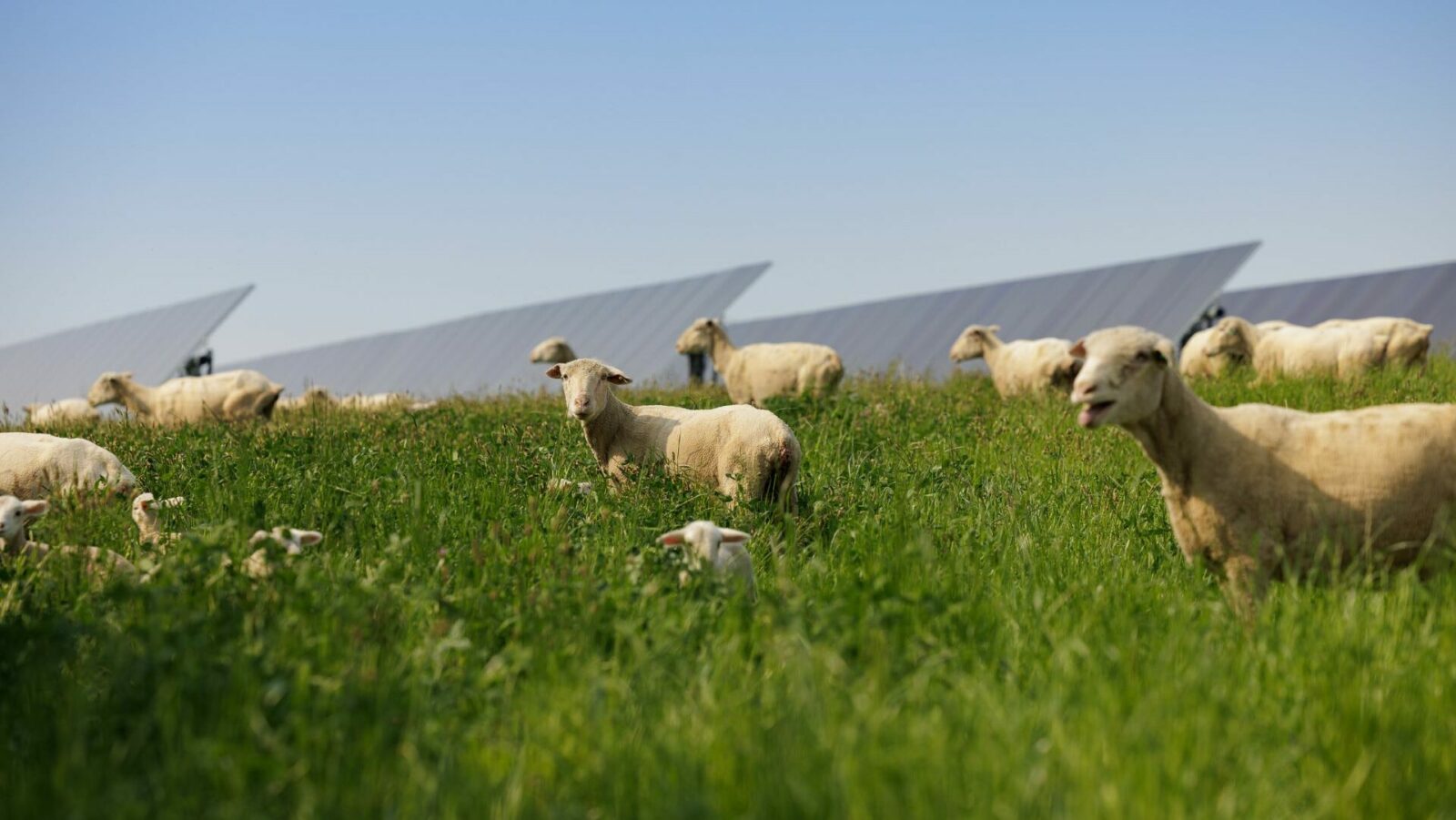Solar grazing consists of placing grazing animals, such as sheep, in the same field as a solar installation. Although sheep are the most common animals, other types of livestock are also used in some installations.
When solar panels are installed, it is beneficial to have grasslands underneath. Vegetation prevents rainwater and erosion from contaminating the water supply, but it also needs to be controlled. Tall vegetation could cast shade on the panels, reducing their efficiency, and moreover, the fire risk posed by acres of dry grass is a concern.
Traditionally, solar farm owners have regularly mowed the grass, but it is not easy to maneuver a lawnmower around the posts and panels. On the other hand, sheep are excellent natural lawnmowers, capable of moving through crevices and grazing grass under any weather condition.
Growth of solar grazing in the United States and Europe
The American Solar Grazing Association estimates that about 80,000 sheep currently graze on more than 40,000 hectares of 500 solar panel sites in 27 states in the United States, a figure that has increased tenfold in just two years.
While the United States announces this new era in agriculture, Europe has been practicing it for some time. In 2023, the Spanish company Iberdrola announced the installation of a flock of 300 sheep in its photovoltaic parks in Portugal. “It is beneficial for the solar park, as it ensures the ecological maintenance of the land and reduces the risk of fires,” says Iberdrola. “It also benefits the animals, who, in addition to access to food, find in the solar panels protection against the sun, rain, and wind.”
In the United Kingdom, a 1 GW project in Nottinghamshire will share its 1,600 hectares with a flock of 4,000 sheep, a number expected to increase to 9,000, saving 5 million pounds (5.9 million euros) in mowing costs over its 40-year lifespan.
Since 2016, Enel Power has been using sheep to maintain vegetation under its solar panels in Greece, and since 2015, the Saint-Amadou solar park in the Occitania region of France has been home to hundreds of sheep.

Benefits of the union of sheep and solar panels
According to Tony Inder, a farmer from New South Wales (Australia), sheep grazing under solar panels not only benefits the solar farm, but also the sheep. In statements to ‘The Guardian,’ he states that since the solar park was installed on his property, the wool production of the sheep has increased by 15%.
A study published in 2022 in ‘Applied Animal Behaviour Science’ found that sheep with access to solar panels spend more time grazing than those without them, due to the shade provided by the panels.
Another report from 2018 revealed that the shelter of the panels also increases soil moisture, improving forage with high protein content. In addition, sheep grazing fertilizes and rejuvenates the land, improving the quality of forage and long-term soil health, increasing carbon and nutrient storage.
Triple advantage of solar grazing for farmers
Around the world, farmers face challenges due to climate change, rising costs, and market volatility. Diversifying into solar grazing can offer benefits on multiple fronts.
First, there is the contract with the solar farm provider. The amount they can earn depends on the location and size of the leased plot. Instead of closing off the field, farmers have the opportunity to generate additional income through solar grazing.
This way, they obtain income from “renting” the sheep and create jobs for shepherds. A study from Cornell University suggests that a farmer could earn between 300 and 500 dollars (288-480 euros) per acre per year for managing vegetation with sheep.
As studies indicate, sheep grazing in solar facilities are usually healthier and perform better, increasing meat and wool sales.
Have you checked out our YouTube channel yet? Subscribe!

